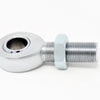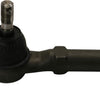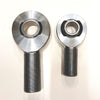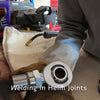The Ultimate Guide to Understanding Tie Rods in Steering Systems: Everything You Need to Know
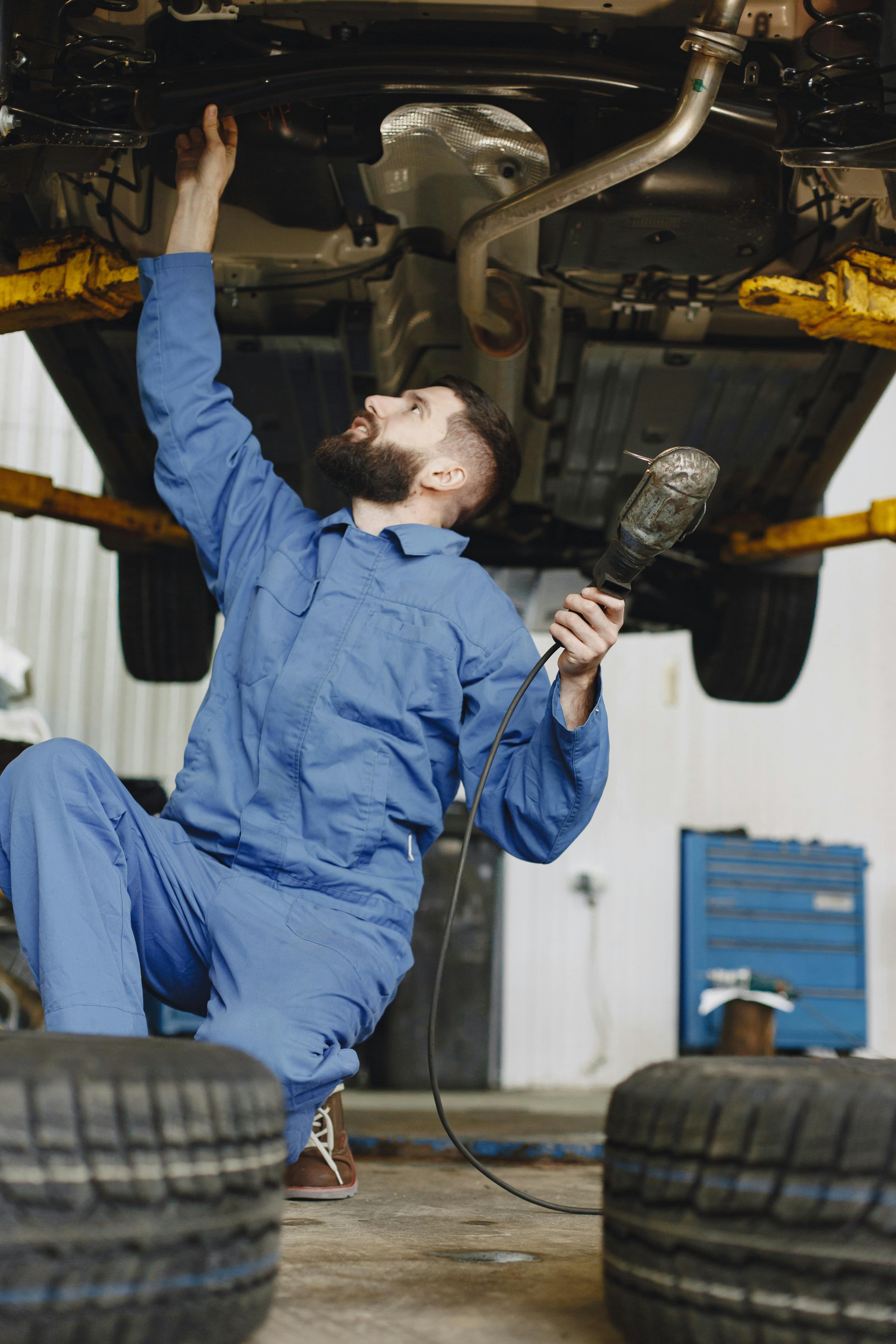
The Ultimate Guide to Understanding Tie Rods in Steering Systems: Everything You Need to Know
Welcome to the ultimate guide to understanding tie rods in steering systems! Whether you're a car enthusiast or a professional mechanic, this comprehensive article will provide you with everything you need to know about tie rods. From their role in maintaining alignment to their impact on steering control, we've got you covered.
Tie rods are critical components of the steering system, connecting the steering knuckle to the steering rack. They play a vital role in ensuring that your vehicle steers accurately and responsively. But understanding how tie rods work and when to replace them can be daunting. That's where this guide comes in.
In this article, we'll delve into the different types of tie rods, how they function, and how to diagnose common issues. We'll also walk you through the step-by-step process of replacing tie rods, saving you time and money on expensive repairs.
Get ready to dive deep into the world of tie rods, so you can make informed decisions about your vehicle's steering system. Let's get started!
Function and importance of tie rods
Tie rods are essential components in a vehicle's steering system, serving as the critical link between the steering gear and the wheels. Their primary function is to transmit the rotational input from the steering wheel to the steering knuckles, allowing the vehicle to turn effectively. This connection enables the steering system to convert the driver's intention into directional movement. Without properly functioning tie rods, steering response can be compromised, leading to potential safety hazards on the road.
The importance of tie rods extends beyond mere functionality; they also play a vital role in maintaining wheel alignment. Proper alignment ensures that all four tires make contact with the road surface evenly, which is crucial for optimal handling, tire longevity, and overall vehicle performance. Misalignment can lead to uneven tire wear, reduced fuel efficiency, and a decrease in vehicle stability. Therefore, understanding the function of tie rods is key to ensuring a smooth and safe driving experience.
In summary, tie rods not only facilitate the steering mechanism but also contribute significantly to the vehicle's alignment and stability. Their maintenance and timely replacement are crucial for ensuring that the steering system operates smoothly and effectively. As we delve deeper into the specifics of tie rods, it becomes clear that they are indispensable for any vehicle's performance and safety.
Types of tie rods
There are primarily two types of tie rods used in modern vehicles: inner tie rods and outer tie rods. Each type serves a distinct purpose within the steering system. Inner tie rods are located closer to the steering rack, connecting the rack to the outer tie rods. They are responsible for adjusting the angle of the wheels during steering. Outer tie rods, on the other hand, connect the inner tie rods to the steering knuckles, directly influencing the pivoting motion of the wheels. Together, these components work in harmony to ensure responsive and accurate steering.
In addition to the basic inner and outer tie rods, there are variations based on design and materials used. For instance, some vehicles may feature adjustable tie rods, allowing for precise tuning of wheel alignment. These adjustable tie rods can be particularly beneficial for performance vehicles that require meticulous handling characteristics. Furthermore, heavy-duty tie rods made from high-strength materials are often used in trucks and off-road vehicles, providing enhanced durability and resistance to wear under extreme conditions.
Understanding the differences among tie rods is crucial for vehicle owners and mechanics alike. Choosing the right type, whether standard or heavy-duty, can impact not only the performance but also the longevity of the steering system. As we move forward, we will explore common signs of tie rod problems and how to identify them before they lead to more significant issues.
Common signs of tie rod problems
Recognizing the early signs of tie rod problems can prevent costly repairs and ensure your vehicle remains safe to drive. One of the most common indicators of tie rod issues is noticeable play in the steering wheel. If you find that your steering feels loose or has excessive free movement, this could signal that the tie rods are worn or damaged. This looseness can lead to poor steering response, making it difficult to maintain control of the vehicle, especially during turns.
Another sign to watch for is uneven tire wear. If you notice that your tires are wearing more on one side than the other, it may be due to misalignment caused by faulty tie rods. Misalignment can lead to uneven pressure on the tires, resulting in premature wear and tear. In addition to tire wear, a vehicle may exhibit unusual noises when turning, such as clunking or popping sounds. These noises can indicate that the tie rods are not seated correctly or are failing, which can compromise the steering system's integrity.
Lastly, if your vehicle pulls to one side while driving straight, it may be a symptom of tie rod failure. A properly functioning steering system should keep your vehicle tracking straight. If you experience any of these signs, it is essential to have your tie rods inspected by a qualified mechanic to prevent further damage and ensure your safety on the road.
How to inspect and diagnose tie rod issues
Inspecting tie rods for wear and damage is a vital part of vehicle maintenance. The process begins with a visual examination of the tie rods and their surrounding components. Look for any signs of rust, corrosion, or physical damage, which can indicate that the tie rods are failing. It's also important to check the rubber boots that cover the joints, as tears or cracks can lead to contamination and premature wear of the tie rods.
Once a visual inspection has been completed, a more thorough check can be performed by manually moving the steering components. With the vehicle safely lifted on a jack stand, grab the tie rod and attempt to shake it side to side. If there is noticeable movement or play, it may indicate that the tie rod ends are worn out and need replacement. Additionally, you can check for any unusual noises while performing this movement, as clunking or grinding sounds can further confirm the presence of a problem.
To ensure accurate diagnosis, it is beneficial to have your vehicle aligned and inspected by a professional. They can identify not only tie rod issues but also any related components that may be causing steering problems. Professional mechanics have specialized tools to measure play and alignment, providing a comprehensive assessment of the steering system's health. Regular inspections can help catch issues early, preventing costly repairs down the line.
Repairing and replacing tie rods
When it comes to repairing or replacing tie rods, it's crucial to understand that this is not a task to be taken lightly. If you've identified that your tie rods are indeed worn or damaged, timely replacement is essential for maintaining vehicle safety and handling. The first step in the replacement process is to gather the necessary tools and parts, which typically include a wrench, a tie rod end puller, and a new tie rod set.
Once you have the required tools, begin by lifting the vehicle and securing it on jack stands. Next, remove the wheel to gain access to the tie rod assembly. Using a wrench, loosen the nut that holds the tie rod in place, and then use a tie rod puller to detach the tie rod from the steering knuckle. This step may require a bit of force, as tie rods can be tightly secured. After detaching the old tie rod, compare it with the new one to ensure that they are of the same length and design.
With the new tie rod in hand, install it by reversing the removal process. Attach the tie rod to the steering knuckle and secure it with the nut, ensuring it is tightened to the manufacturer's specifications. It’s also advisable to have the vehicle’s alignment checked and adjusted after replacing the tie rods. Proper alignment will ensure that the vehicle tracks straight and that the tires wear evenly. By following these steps, you can effectively replace your tie rods and restore your vehicle’s steering performance.
Importance of regular maintenance for tie rods
Regular maintenance of tie rods is vital for ensuring the longevity and effectiveness of your vehicle's steering system. As wear and tear occur over time, neglecting tie rod maintenance can lead to a cascade of issues affecting steering performance, tire wear, and overall vehicle safety. Routine inspections can catch early signs of wear, allowing for timely replacements before more significant problems arise.
Incorporating tie rod checks into your regular vehicle maintenance schedule can save you money in the long run. By proactively addressing minor issues, you can prevent costly repairs related to misalignment, tire replacement, or even more extensive steering system repairs. Additionally, maintaining the tie rods contributes to better fuel efficiency, as a well-aligned vehicle operates more optimally, reducing the strain on the engine.
Furthermore, regular maintenance fosters a safer driving experience. Worn or damaged tie rods can lead to unpredictable handling, making it difficult to steer accurately. This can be particularly dangerous in emergency situations where precise steering is critical. By keeping up with tie rod care, you ensure that your vehicle remains responsive and safe, providing peace of mind as you navigate the roads.
Upgrading tie rods for performance and durability
For automotive enthusiasts or those who frequently drive in demanding conditions, upgrading tie rods can enhance both performance and durability. Standard tie rods are designed to meet the needs of everyday driving, but high-performance vehicles or off-road applications may require more robust components. Upgraded tie rods often feature stronger materials and designs that can withstand greater stress and provide improved handling characteristics.
When considering an upgrade, look for tie rods made from high-strength alloys or those that have been treated for increased durability. Adjustable tie rods can also be beneficial, allowing for fine-tuning of the suspension and alignment settings. This level of control can significantly enhance the driving experience, especially in performance or racing scenarios where precision handling is a must.
Additionally, upgrading tie rods can contribute to better overall vehicle stability. Enhanced tie rods can reduce flex and movement during aggressive driving, leading to more responsive steering feedback. If you're planning to modify your vehicle for increased performance, investing in high-quality tie rods should be part of your overall upgrade strategy. This investment not only enhances performance but also promotes longevity and reliability in the steering system.
Tips for extending the lifespan of tie rods
Extending the lifespan of tie rods requires a combination of proper care, regular maintenance, and mindful driving habits. One of the most effective ways to prolong the life of tie rods is through consistent inspections. Regularly check for signs of wear, such as fraying rubber boots or looseness in the steering components. By catching potential issues early, you can prevent further damage and ensure the tie rods remain in good condition.
Another tip is to maintain proper wheel alignment. Misalignment can place excessive stress on tie rods, leading to premature wear. Regular alignment checks, especially after significant driving events such as hitting a pothole or curb, can help ensure that the steering system operates smoothly. Keeping tires properly inflated also plays a crucial role; under-inflated or over-inflated tires can lead to uneven wear and additional strain on the tie rods.
Finally, adopting a gentle driving style can help extend the life of your tie rods. Avoiding aggressive turns, sudden stops, and sharp maneuvers can reduce the stress placed on the tie rod assembly. Smooth driving habits not only protect the tie rods but also contribute to better overall vehicle performance and comfort. By implementing these tips, you can significantly enhance the durability and reliability of your tie rods.
Conclusion: Understanding the role of tie rods in steering systems
In conclusion, tie rods are integral components of a vehicle’s steering system, playing a crucial role in ensuring safety, performance, and handling. Understanding their function, types, and the signs of potential issues can empower vehicle owners to make informed decisions regarding maintenance and repairs. Regular inspections and timely replacements are essential for keeping the steering system in optimal condition, preventing costly repairs, and ensuring a safe driving experience.
Moreover, for those interested in performance upgrades, investing in high-quality tie rods can enhance vehicle stability and responsiveness. By following the tips for extending their lifespan, drivers can enjoy a smoother ride while promoting the longevity of their steering components.
Ultimately, a comprehensive understanding of tie rods can lead to better maintenance practices and more enjoyable driving experiences. Whether you're a casual driver or an automotive enthusiast, recognizing the importance of these components is vital for keeping your vehicle operating at its best. Embrace the knowledge gained from this guide to keep your steering system functioning seamlessly, ensuring safety on every journey.
Written by AI


